Opinion & Analysis
Growing Up Golf Part 6: The Right Ball
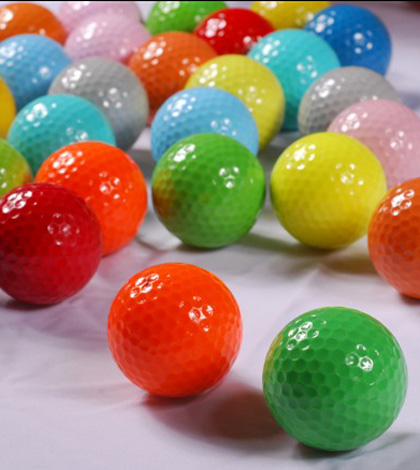
Click here to read all the articles in Kadin’s series, “Growing Up Golf.”
At the beginning stages of your child’s development, you really don’t need to fuss about what golf ball your child uses. For the most part, we can just buy whatever is on the clearance rack or the “recycled” ball bin at your local pro shop or sports store, right?
Wrong! Your child needs to be fitted for a golf ball the same as your child needs to be fitted for their clubs.
Let’s start with a few terms used when selecting a golf ball.
Swing Speed: Swing speed is a measure of velocity, in miles per hour, of how fast the head of a golf club is traveling at the point it makes impact with the golf ball. Swing speed can be recorded by a launch monitor or other electronic radar devices.
Spin: Spin is the rotation of the golf ball in flight or the measured rate of that rotation. It’s what causes shots rise, curve and “back up” after hitting the green.
Compression: Compression is a measurement of the firmness of the golf ball. Typically, the softer the golf ball feels the lower the compression rating.
Trajectory: Trajectory is a term used to describe the flight characteristics of a golf shot. It considers the height of the shot as well as its launch and landing characteristics.
There have been huge advancements made during the last decade when it comes to golf balls. From core to cover, golf balls have changed drastically from the days of “wound” balls. Golf balls can be categorized by cover material, which is usually urethane or surlyn. There are spin ratings for the driver and long irons, greenside spin ratings for wedge play. They come in multiple layers and can be described as a two-piece, three-piece, four-piece and even five-piece balls. Some are categorized as “low,” “mid” or “high” trajectory, which are relative terms. Finally, they come in different compression ratings. When it comes to choosing the right ball for the adult amateur, the decision can be mind boggling. When it comes to choosing a ball for your child, I am happy to say this process is going to be much easier.
For children, you only need to look as far as the compression rating. And before I get the, “Yeah, but my child needs more greenside control and less driver spin,” keep in mind that we are talking about the beginner level, ages 5-12. I will touch base on younger than 5 and older than 12 as we go.
Compression rating rating is important because you want your child to be able to get the ball up in the air and hit it straight; distance should not be as much of a concern at this point. In order to accomplish this, your child will need to be able to compress the core of the golf ball, which in turn will yield a high initial launch. Choosing the correct compression will make it easier for your child to achieve this.
So how do we know the right compression? It’s as simple as knowing your child’s swing speed. To find out your child’s swing speed, have him/her take some swings on equipment that is designed to measure swing speeds based on miles per hour. Most of your local pro shops and some of the big name box stores will have this equipment available and usually will be able to measure swings for you. If you are unable to have your child’s swing checked, U.S. Kids Golf has created a kids swing speed chart based on age, using testing results compiled from the U.S. Kids Golf World Championship.
Age 5 Swing Speed: 51 mph Age 9 Swing Speed: 73 mph
Age 6 Swing Speed: 58 mph Age 10 Swing Speed: 76 mph
Age 7 Swing Speed: 62 mph Age 11 Swing Speed: 82 mph
Age 8 Swing Speed: 68 mph Age 12 Swing Speed: 86 mph
So now that we have your son/daughter’s swing speed, how does match it up to the compression ratio? We need to look for golf balls that have compression ratings ranging between 45 and 70. The lower the swing speed, the lower the compression should be. According to U.S. Kids Golf, children with swing speeds under 70 mph should be playing a ball with a compression of 45, and children with swing speeds between 71 mph and 90 mph should be using a ball with a compression rating of 62. This is why companies have created two balls, one for each range.
The U.S. Kids Golf 70: This golf ball is specially formulated to the Optimal Performance Combination (OPC) to provide the best results for golfers with swing speeds of 70 mph or less. Featuring a compression of 45, this ball is designed to give those with the appropriate swing speed more distance and trajectory while maintaining a soft feel.
The U.S. Kids Golf 90: This golf ball is specially formulated to the OPC to provide the best results for golfers with swing speeds of up to 90 mph. Featuring a compression of 62, this ball is designed to give those with the appropriate swing speed more distance and trajectory while maintaining a soft feel.
Nike also has a golf ball designed specifically for young golfers called The Nike EZ-Distance Youth Golf Ball. It is designed to deliver faster ball speed off slower swings, and higher ball flight for optimal carry.
There are a lot of great low compression/slow swing speed balls out there. Some manufacturers market their balls by swing speed and some market their balls by compression rating. If you are not sure, ask your pro shop attendant to clarify that the ball you are purchasing is a low-compression ball or one that matches your child’s swing speed. One of the best ways to determine which ball would be best for your child is to buy a couple sleeves of different brands and compression levels and test which ball works the best. The right ball can go a long way in making your junior golfer’s experience the best it can be at this point. As your child gets older and stronger, you will want to reassess what type of ball your child is hitting; it should always be a ball that is appropriate for your child’s swing.
For those of you that have children 5 or younger and are at the very beginning of golf introduction, you can have them hit just about any round object under the sun. My son and daughter hit everything, including foam practice balls, Wiffle balls, bouncy balls, tennis balls and even rolled up socks! Until they start going to the practice area, there really isn’t a serious need for them to hit golf balls. Let them play and hit whatever they want. Plus, lager objects are easier to hit and some will make silly sounds when struck. This is instant gratification for the little ones.
If you are the parent whose child requires “more greenside control and less driver spin,” you’re at that stage where your son/daughter is looking to play a Tour-level ball and are at the serious competition/tournament level. The best suggestion I can give you is have your young athlete attend a professional ball fitting. With such a vast selection of Tour-level balls, it is very hard to tell which one will give you optimal performance without seeing some real-world numbers on a launch monitor. If you are serious about playing the best equipment for YOUR game, you need to be professionally fit.
Having your child play the same ball as his/her favorite PGA/LPGA star is not going to cut it. Professional golfers use a ball that gives them the best performance possible and the way they found out is by testing them on a launch monitor and then testing them on the course. They look for specific things such as a certain amount of spin, feel, driver distance and trajectory control. These are considerations you need to look at when choosing a top tier ball.
Okay moms and dads, don’t let the golf ball selection process scare you, it’s not as hard as it sounds. The little ones younger than 5 years old hit every round object under the sun. For players 5 to 12 years old, it’s a process of matching your swing speed to the compression rating. The older athletes competing in tournaments, high school matches and even those that are college bound, you need to attend a professional ball fitting.
Click here for more discussion in the “Junior Golf” forum.
- LIKE23
- LEGIT7
- WOW3
- LOL2
- IDHT4
- FLOP3
- OB2
- SHANK9
19th Hole
Vincenzi’s 2024 Zurich Classic of New Orleans betting preview

The PGA TOUR heads to New Orleans to play the 2023 Zurich Classic of New Orleans. In a welcome change from the usual stroke play, the Zurich Classic is a team event. On Thursday and Saturday, the teams play best ball, and on Friday and Sunday the teams play alternate shot.
TPC Louisiana is a par 72 that measures 7,425 yards. The course features some short par 4s and plenty of water and bunkers, which makes for a lot of exciting risk/reward scenarios for competitors. Pete Dye designed the course in 2004 specifically for the Zurich Classic, although the event didn’t make its debut until 2007 because of Hurricane Katrina.
Coming off of the Masters and a signature event in consecutive weeks, the field this week is a step down, and understandably so. Many of the world’s top players will be using this time to rest after a busy stretch.
However, there are some interesting teams this season with some stars making surprise appearances in the team event. Some notable teams include Patrick Cantlay and Xander Schauffele, Rory McIlroy and Shane Lowry, Collin Morikawa and Kurt Kitayama, Will Zalatoris and Sahith Theegala as well as a few Canadian teams, Nick Taylor and Adam Hadwin and Taylor Pendrith and Corey Conners.
Past Winners at TPC Louisiana
- 2023: Riley/Hardy (-30)
- 2022: Cantlay/Schauffele (-29)
- 2021: Leishman/Smith (-20)
- 2019: Palmer/Rahm (-26)
- 2018: Horschel/Piercy (-22)
- 2017: Blixt/Smith (-27)
2024 Zurich Classic of New Orleans Picks
Tom Hoge/Maverick McNealy +2500 (DraftKings)
Tom Hoge is coming off of a solid T18 finish at the RBC Heritage and finished T13 at last year’s Zurich Classic alongside Harris English.
This season, Hoge is having one of his best years on Tour in terms of Strokes Gained: Approach. In his last 24 rounds, the only player to top him on the category is Scottie Scheffler. Hoge has been solid on Pete Dye designs, ranking 28th in the field over his past 36 rounds.
McNealy is also having a solid season. He’s finished T6 at the Waste Management Phoenix Open and T9 at the PLAYERS Championship. He recently started working with world renowned swing coach, Butch Harmon, and its seemingly paid dividends in 2024.
Keith Mitchell/Joel Dahmen +4000 (DraftKings)
Keith Mitchell is having a fantastic season, finishing in the top-20 of five of his past seven starts on Tour. Most recently, Mitchell finished T14 at the Valero Texas Open and gained a whopping 6.0 strokes off the tee. He finished 6th at last year’s Zurich Classic.
Joel Dahmen is having a resurgent year and has been dialed in with his irons. He also has a T11 finish at the PLAYERS Championship at TPC Sawgrass which is another Pete Dye track. With Mitchell’s length and Dahmen’s ability to put it close with his short irons, the Mitchell/Dahmen combination will be dangerous this week.
Taylor Moore/Matt NeSmith +6500 (DraftKings)
Taylor Moore has quickly developed into one of the more consistent players on Tour. He’s finished in the top-20 in three of his past four starts, including a very impressive showing at The Masters, finishing T20. He’s also finished T4 at this event in consecutive seasons alongside Matt NeSmith.
NeSmith isn’t having a great 2024, but has seemed to elevate his game in this format. He finished T26 at Pete Dye’s TPC Sawgrass, which gives the 30-year-old something to build off of. NeSmith is also a great putter on Bermudagrass, which could help elevate Moore’s ball striking prowess.
- LIKE8
- LEGIT3
- WOW1
- LOL1
- IDHT0
- FLOP3
- OB1
- SHANK2
19th Hole
Vincenzi’s 2024 LIV Adelaide betting preview: Cam Smith ready for big week down under

After having four of the top twelve players on the leaderboard at The Masters, LIV Golf is set for their fifth event of the season: LIV Adelaide.
For both LIV fans and golf fans in Australia, LIV Adelaide is one of the most anticipated events of the year. With 35,000 people expected to attend each day of the tournament, the Grange Golf Club will be crawling with fans who are passionate about the sport of golf. The 12th hole, better known as “the watering hole”, is sure to have the rowdiest of the fans cheering after a long day of drinking some Leishman Lager.
The Grange Golf Club is a par-72 that measures 6,946 yards. The course features minimal resistance, as golfers went extremely low last season. In 2023, Talor Gooch shot consecutive rounds of 62 on Thursday and Friday, giving himself a gigantic cushion heading into championship Sunday. Things got tight for a while, but in the end, the Oklahoma State product was able to hold off The Crushers’ Anirban Lahiri for a three-shot victory.
The Four Aces won the team competition with the Range Goats finishing second.
*All Images Courtesy of LIV Golf*
Past Winners at LIV Adelaide
- 2023: Talor Gooch (-19)
Stat Leaders Through LIV Miami
Green in Regulation
- Richard Bland
- Jon Rahm
- Paul Casey
Fairways Hit
- Abraham Ancer
- Graeme McDowell
- Henrik Stenson
Driving Distance
- Bryson DeChambeau
- Joaquin Niemann
- Dean Burmester
Putting
- Cameron Smith
- Louis Oosthuizen
- Matt Jones
2024 LIV Adelaide Picks
Cameron Smith +1400 (DraftKings)
When I pulled up the odds for LIV Adelaide, I was more than a little surprised to see multiple golfers listed ahead of Cameron Smith on the betting board. A few starts ago, Cam finished runner-up at LIV Hong Kong, which is a golf course that absolutely suits his eye. Augusta National in another course that Smith could roll out of bed and finish in the top-ten at, and he did so two weeks ago at The Masters, finishing T6.
At Augusta, he gained strokes on the field on approach, off the tee (slightly), and of course, around the green and putting. Smith able to get in the mix at a major championship despite coming into the week feeling under the weather tells me that his game is once again rounding into form.
The Grange Golf Club is another course that undoubtedly suits the Australian. Smith is obviously incredibly comfortable playing in front of the Aussie faithful and has won three Australian PGA Championship’s. The course is very short and will allow Smith to play conservative off the tee, mitigating his most glaring weakness. With birdies available all over the golf course, there’s a chance the event turns into a putting contest, and there’s no one on the planet I’d rather have in one of those than Cam Smith.

Louis Oosthuizen +2200 (DraftKings)
Louis Oosthuizen has simply been one of the best players on LIV in the 2024 seas0n. The South African has finished in the top-10 on the LIV leaderboard in three of his five starts, with his best coming in Jeddah, where he finished T2. Perhaps more impressively, Oosthuizen finished T7 at LIV Miami, which took place at Doral’s “Blue Monster”, an absolutely massive golf course. Given that Louis is on the shorter side in terms of distance off the tee, his ability to play well in Miami shows how dialed he is with the irons this season.
In addition to the LIV finishes, Oosthuizen won back-to-back starts on the DP World Tour in December at the Alfred Dunhill Championship and the Mauritus Open. He also finished runner-up at the end of February in the International Series Oman. The 41-year-old has been one of the most consistent performers of 2024, regardless of tour.
For the season, Louis ranks 4th on LIV in birdies made, T9 in fairways hit and first in putting. He ranks 32nd in driving distance, but that won’t be an issue at this short course. Last season, he finished T11 at the event, but was in decent position going into the final round but fell back after shooting 70 while the rest of the field went low. This season, Oosthuizen comes into the event in peak form, and the course should be a perfect fit for his smooth swing and hot putter this week.

- LIKE12
- LEGIT3
- WOW1
- LOL1
- IDHT0
- FLOP1
- OB1
- SHANK1
Opinion & Analysis
The Wedge Guy: What really makes a wedge work? Part 1

Of all the clubs in our bags, wedges are almost always the simplest in construction and, therefore, the easiest to analyze what might make one work differently from another if you know what to look for.
Wedges are a lot less mysterious than drivers, of course, as the major brands are working with a lot of “pixie dust” inside these modern marvels. That’s carrying over more to irons now, with so many new models featuring internal multi-material technologies, and almost all of them having a “badge” or insert in the back to allow more complex graphics while hiding the actual distribution of mass.
But when it comes to wedges, most on the market today are still single pieces of molded steel, either cast or forged into that shape. So, if you look closely at where the mass is distributed, it’s pretty clear how that wedge is going to perform.
To start, because of their wider soles, the majority of the mass of almost any wedge is along the bottom third of the clubhead. So, the best wedge shots are always those hit between the 2nd and 5th grooves so that more mass is directly behind that impact. Elite tour professionals practice incessantly to learn to do that consistently, wearing out a spot about the size of a penny right there. If impact moves higher than that, the face is dramatically thinner, so smash factor is compromised significantly, which reduces the overall distance the ball will fly.
Every one of us, tour players included, knows that maddening shot that we feel a bit high on the face and it doesn’t go anywhere, it’s not your fault.
If your wedges show a wear pattern the size of a silver dollar, and centered above the 3rd or 4th groove, you are not getting anywhere near the same performance from shot to shot. Robot testing proves impact even two to three grooves higher in the face can cause distance loss of up to 35 to 55 feet with modern ‘tour design’ wedges.
In addition, as impact moves above the center of mass, the golf club principle of gear effect causes the ball to fly higher with less spin. Think of modern drivers for a minute. The “holy grail” of driving is high launch and low spin, and the driver engineers are pulling out all stops to get the mass as low in the clubhead as possible to optimize this combination.
Where is all the mass in your wedges? Low. So, disregarding the higher lofts, wedges “want” to launch the ball high with low spin – exactly the opposite of what good wedge play requires penetrating ball flight with high spin.
While almost all major brand wedges have begun putting a tiny bit more thickness in the top portion of the clubhead, conventional and modern ‘tour design’ wedges perform pretty much like they always have. Elite players learn to hit those crisp, spinny penetrating wedge shots by spending lots of practice time learning to consistently make contact low in the face.
So, what about grooves and face texture?
Grooves on any club can only do so much, and no one has any material advantage here. The USGA tightly defines what we manufacturers can do with grooves and face texture, and modern manufacturing techniques allow all of us to push those limits ever closer. And we all do. End of story.
Then there’s the topic of bounce and grinds, the most complex and confusing part of the wedge formula. Many top brands offer a complex array of sole configurations, all of them admittedly specialized to a particular kind of lie or turf conditions, and/or a particular divot pattern.
But if you don’t play the same turf all the time, and make the same size divot on every swing, how would you ever figure this out?
The only way is to take any wedge you are considering and play it a few rounds, hitting all the shots you face and observing the results. There’s simply no other way.
So, hopefully this will inspire a lively conversation in our comments section, and I’ll chime in to answer any questions you might have.
And next week, I’ll dive into the rest of the wedge formula. Yes, shafts, grips and specifications are essential, too.
- LIKE34
- LEGIT7
- WOW1
- LOL1
- IDHT2
- FLOP3
- OB1
- SHANK3
-

 19th Hole2 weeks ago
19th Hole2 weeks agoDave Portnoy places monstrous outright bet for the 2024 Masters
-

 19th Hole4 days ago
19th Hole4 days agoJustin Thomas on the equipment choice of Scottie Scheffler that he thinks is ‘weird’
-

 19th Hole2 weeks ago
19th Hole2 weeks agoTiger Woods arrives at 2024 Masters equipped with a putter that may surprise you
-

 19th Hole3 days ago
19th Hole3 days ago‘Absolutely crazy’ – Major champ lays into Patrick Cantlay over his decision on final hole of RBC Heritage
-

 19th Hole2 weeks ago
19th Hole2 weeks agoTwo star names reportedly blanked Jon Rahm all week at the Masters
-

 19th Hole1 week ago
19th Hole1 week agoReport: LIV Golf identifies latest star name they hope to sign to breakaway tour
-

 19th Hole2 weeks ago
19th Hole2 weeks agoNeal Shipley presser ends in awkward fashion after reporter claims Tiger handed him note on 8th fairway
-

 19th Hole1 week ago
19th Hole1 week agoBrandel Chamblee has ‘no doubt’ who started the McIlroy/LIV rumor and why

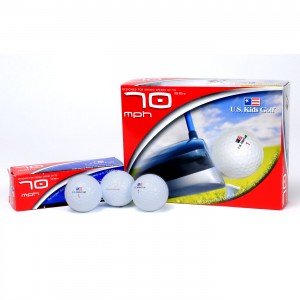
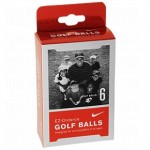


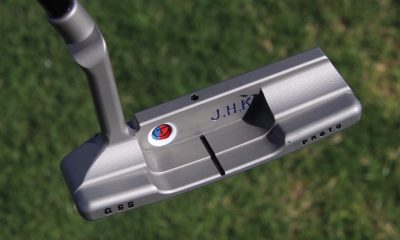





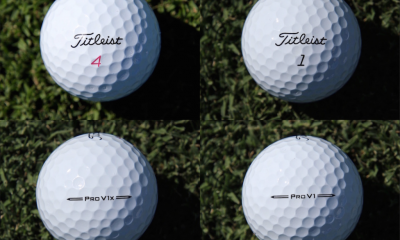

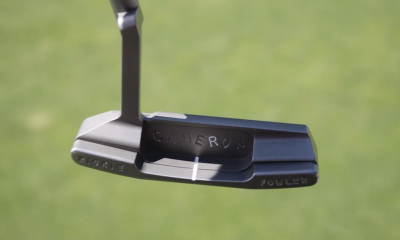

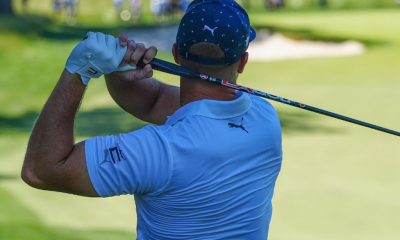














Pingback: Terminologies in Club Fitting You Need to Be Familiar With | Golf Gear Select